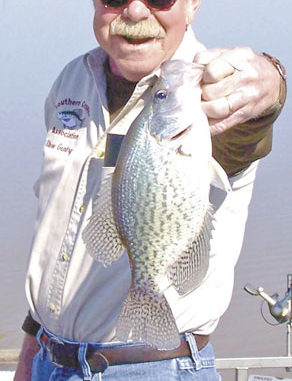
Slow-trolling vertically is the key to great fall crappie fishing on four Piedmont lakes.
In days gone by, crappie fishing was a springtime, single-rod venture aimed at filling a stringer with slabs and a frying pan with tender white fillets. While casting and jigging with a single rod can be extremely effective when fish are holding around shallow, visible cover, finding them in open water where you can barely make out the shoreline, much less fish it, is another challenge.
As the number of crappie tournaments grew, spreading across the calendar, so did the number of rods fishermen used to catch them — especially during the fall and winter when crappie are off the bank and suspended over deep structure such as channel ledges, brushpiles and dropoffs.
The approach came to be called “spider-rigging” because a fisherman’s boat — with long, spindly rods pointed in all directions — looked like a spider. Many old-school crappie fishermen scoffed at the idea of using so many rods, but they couldn’t argue with the results. Many die-hards figured, “If you can’t beat ’em, join ’em” — including Tom Sprouse and Steve Gentry.
“I first learned … from one of the national teams that had won more crappie tournaments and national championships than anybody else,” said Tom Sprouse, a native of Advance who has fished in local and regional crappie tournaments for nearly 20 years. “Ronnie Capps and Steve Coleman call it ‘slow, vertical trolling,’ but most of the tournament anglers just call it tight-lining.”
The first thing newcomers notice about tight-lining is the exceptionally long rods used. A 12-foot rod is considered short in spider-rigging circles, and the norm is something in the 14- to 16-foot range. There are even 4-section rods on the market that extend to 20 feet. Couple that kind of length with the fact that teams may use as many as 20 rods per boat, and most casual anglers just shake their heads and walk away.
“Once you get the hang of it, it’s not as hard as it looks,” said Sprouse. “There’s definitely a system involved. A lot of teams will fish two anglers side-by-side in the front of the boat and leave the back open, but Steve Gentry and I prefer to fish one in the front and one in the back.”
One of the keys to tight-lining is having a rodholder setup that will keep the rods arranged in order and allow fishermen room to operate the boat and keep track of what’s under the boat on the depthfinder. With baits dangling on tight lines around the bow and stern, fishermen use an electric trolling motor to slow-troll baits over and around underwater structure. It requires a lot of patience and concentration to keep everything under control and detect a bite which may be a subtle as a twitch in the line or forceful enough to pull a rod tip down into the water.
“I like to tight-line when crappie are concentrated in a small area such as a deep brushpile or a channel drop or bend in the river channel,” Sprouse said. “We find them by trolling along the edge of a river ledge and find that there might be only one spot every 200 to 300 yards that will hold fish.”
Finding and catching crappie is accomplished the same way. Once a couple of fish are boated, fishermen can easily reverse course and troll around and across the productive spot until they stop getting bites, then move on down the ledge.
“We sink a lot of brushpiles in all the lakes that we fish,” said Gentry, a Winston-Salem native who’s been manning the southern end of Sprouse’s Ranger boat for nearly seven years. “Most of them are out in open water and located along some travel route like a creek channel or river edge.”
Sprouse and Gentry fish different depths until they find the one fish prefer, then they’ll hone in on them and really start loading the boat.
“Tom fishes shallow out of the front, while I fish deeper from the back,” Gentry said. “I always fish at least two rods right on the bottom. Occasionally that’s a problem with hang-ups, but I’ve caught some really nice fish right off the bottom, especially when the boat goes into a turn.”
“Our typical set up is eight rods out the front and eight rods out the back,” said Sprouse. “I like the BnM Poles 16-foot Pro Staff trolling rods. They’re light, but still stiff enough to support the weighted rig. Steve prefers 14-footers from the back. All of our baits are the Capps-and-Coleman 2-hook rigs that incorporate a 3-way swivel with an egg sinker on the bottom leg to hold it tight down in the water.”
“The weight of the egg sinker tied into the bottom leg of the rig varies with the depth of water fished. For shallow fishing (seven to 12 feet), we use a half-ounce weight. From 12 to 18 feet, we use a ¾-ounce weight, and for more that 18 feet we use a 1-ounce egg sinker.”
For September fishing, the team favors 2- to 3-inch live minnows, which are a close match to the natural forage that crappie feed on this time of year. On occasion, however, if the crappie bite is slow, they will replace the No. 2 Eagle Claw extra-light wire hook with a 1/16th-ounce jighead on the Capps-and-Coleman rig and piggy back a live minnow on top of a Kalin tube jig.
“We put straight minnows on some of the rods and jig-and-minnow combos on the others and let the fish decide what they want on a given day,” said Sprouse, “but we always use live bait — whether it’s by itself or paired with a jig.”
The team use the same size line to make the rig as they spool on their reels, which is 10 pound Triple Fish mono. Gentry offers that the smaller diameter of the Triple Fish works well for tight lining because it cuts water better and the 10 pound test will easily straighten the light wire hooks on the rig.
Sprouse controls the speed of his boat with a variable-speed Minn Kota trolling motor. He monitors his speed through a paddle-wheel speedometer mounted to the trolling motor, but he can also gauge the correct speed by the angle of his fishing lines.
“I like about a 10- to 15-degree angle from vertical,” he said. “That makes the rig lay out right; too fast and the rigs will lay out flat and maybe tangle together, and too slow and the baits get tangled in the rig. If we’re on a good spot, I’ll just troll the boat in a wide circle, catching fish as we go.”
Sprouse and Gentry tight-line on just about every lake they fish, and they tight-line year-round. Three of their favorite lakes are on the Yadkin-Pee Dee system — Badin and Tillery — and the other is on the opposite end of the Piedmont: Jordan.
“On Badin, I like the Lane’s Chapel area down around the (Uwharrie Point) golf course,” Sprouse said. “There’s a big bend in the river channel across from Graveyard Island. Look for brushpiles in 25 to 30 feet of water, because the fish will still be deep early in the month. Toward the end of the month, I’ll move over to Buffalo Creek or Machine Creek and start at the mouth and work my way towards the back.”
Sprouse said crappie will be keying in on baitfish, and as they move toward the shallows when the weather starts to cool off, slabs won’t be far behind.
Sprouse and Gentry prefer to launch at the N.C. Wildlife Resources Commission ramp off Circle Drive at the back of Reynolds Creek.
When they fish Tillery, they start at either Cedar Creek or Jacobs Creek. Fish should be holding in the deeper water at the mouths of the creeks. Don’t overlook deeper flats that are close by. Find stumps and brushpiles with your electronics and get your baits down close to the structure.
By mid-September, depending on how the weather changes, crappie will work their way back along the creek channels. Follow the main creek channels in the 15- to 20-foot range until you get bites.
A good access point is the Swift Island ramp. From Troy in Montgomery County, travel NC 24/27 west 12 miles; the ramp is on the left, just downstream from the bridge.
Sprouse and Gentry have won numerous tournaments on High Rock, including two Southern Crappie Association events in 2006. It might be their favorite lake.
“Start down the river at the Blacks Bottom and ‘One Bush’ areas,” Sprouse said. “If you look on the Hot Spots map, you’ll see those flats that are located close to deep-water dropoffs between Second Creek and Panther Creek on both sides of the lake. There are a lot of brushpiles down there, and they’ll hold fish early in the month ’til they start to move.”
Later in the month, Sprouse and Gentry suggest working upstream from the mouth of Abbotts Creek toward Sailboat Neck. Look for fish in 18 to 20 feet of water.
When they make the 100-mile trip east to Jordan Lake, Farrington Point, off SR 1008 about five miles north of its intersection with US 64, is a favorite jumping-off spot.
“There are some big crappie in Jordan,” Gentry said. “A lot of them can be found in the Farrington Point area pretty much year-round.”
Early in September, Sprouse and Gentry will idle out from the Farrington Point ramp to the bridge, fishing either side of the bridge along the edges of the main channel. They said stumps, which are magnets for big fish, line either side of the channel. “If you find the right stump, you can have a heyday,” Sprouse said.
The deeper flats that border the channel slope from around 16 feet down to 30 feet at the edge of the channel. Don’t overlook the possibility that fish will suspend out over the channel itself in 30 feet of water.
With both deep and shallow water in the same vicinity, they will fish this area through both September and October until the crappie migrate down the lake as the water cools off.

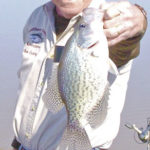
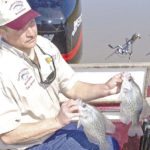
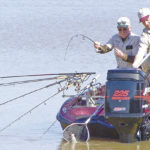
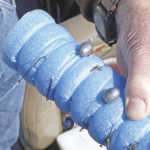
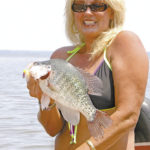
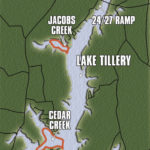
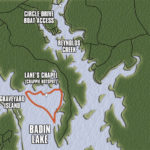
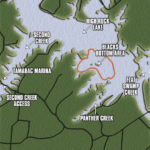
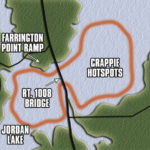
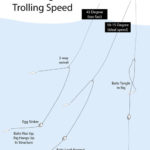



Be the first to comment